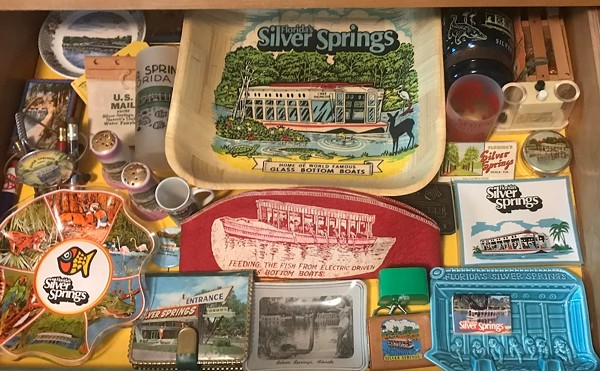It must have been rough being Vincent Van Gogh. Plagued by recurring bouts of mental illness, hounded by loneliness and misunderstanding, depressed by failure to sell his work and rejection by would-be friends and lovers, it almost didn’t matter that he was one of the greatest artists who ever lived.
Did he really shoot himself in 1890? Scholars aren’t sure — no gun was ever found — but his personal life was such a fiasco, it’s easy enough to assume that the wound was self-inflicted. On the other hand, there’s abundant evidence that even at his worst, Van Gogh still found joy in the world he painted — as when he commented on his turbulent wheatfield paintings, “These canvases will tell you what I cannot say in words, that is, how healthy and invigorating I find the countryside.”
Anguished martyr or celebrator of the earth’s splendor — somehow Van Gogh was both. That “Portrait of Dr. Gachet”: yes, it’s melancholy. But who hasn’t been enchanted by “The Starry Night”?
Now Jobsite Theater is helping us reconsider this paradox with its fine production of Steven Dietz’s Inventing Van Gogh. This ambitious play juxtaposes several unrelated plotlines, some taking place in Van Gogh’s day, some taking place now, and introduces us not only to Van Gogh himself but to contemporary painter Patrick Stone, who accepts the assignment of faking a last self-portrait by the tortured Dutch artist.
Though the various stories don’t ever cohere into a single meaningful whole, it’s pleasing nonetheless to watch Van Gogh confront Paul Gauguin at one moment, and then to witness present-day Patrick being rebuked by ex-lover Haley for walking out on her a moment later. Patrick and Vincent even have conversations about art across the centuries — arrogant Patrick doesn’t think much of Van Gogh’s oeuvre — and there’s one dazzling scene in which both painters work impossibly on canvases placed back to back with each other.
Author Dietz, who also played with multiple realities in Private Eyes, wants us to know that the theater has potentials far beyond stodgy realism, and he’s not afraid of confusing us in the course of whirling us through time and space. I wish all his virtuosity added up to more than its parts; but even though it doesn’t, the result is still refreshing.
The show’s actors, directed beautifully by Karla Hartley, are outstanding. As Van Gogh, red-haired and bearded Jordan Foote is passionate and headstrong, more robust, perhaps, than the painter in the popular imagination, but convincing nonetheless as a juggernaut sometimes capable of finishing a new canvas every day. As his modern counterpart, Steve Fisher is an equally forceful but less charismatic figure; it’s not his fault if Dietz has failed to make it clear just how talented (or not) he is, and why he of all people should have been chosen to commit artistic fraud.
As Bouchard, the “authenticator” whose idea it is to validate a counterfeit painting, Ned Averill-Snell is terrific: quiet, sophisticated, pleased with himself, not to be trusted. Averill-Snell also plays Gauguin as a lazy, stubborn egoist: one can imagine Van Gogh’s difficulty in collaborating with such a recalcitrant figure. Greg Thompson is first-rate as Patrick’s art teacher Dr. Miller: whether lecturing on Van Gogh’s life or risking his own sanity in the search for the lost last painting, Thompson communicates gravitas and obsessiveness in just the right proportions. He’s also fine as Gachet, the doctor and friend who cares for Van Gogh in the painter’s final days.
And then there’s Nicole Jeannine Smith, an actress who seems to play every part radiantly: her Haley Miller is so engaging, it’s hard to imagine why Patrick (or anyone) would leave her for other stimulants.
All the characters are well-costumed by Bailee Booser (I especially enjoyed Patrick’s paint-spattered clothes), and Brian Smallheer’s minimal set, if not terribly interesting, is really all that’s necessary for this jaunt across oceans and centuries. A nice touch is the projection of famous Van Gogh paintings onto the three windows backing the playing space.
Why is a play about Van Gogh’s life and art also about a contemporary plot to forge a Van Gogh? Inventing Van Gogh never answers this question; and it’s a central weakness we ultimately can’t ignore.
But if you can tolerate this defect, the play and the production have much to offer — not least, an informed, compassionate look at one of history’s greatest, and most tormented geniuses.
















